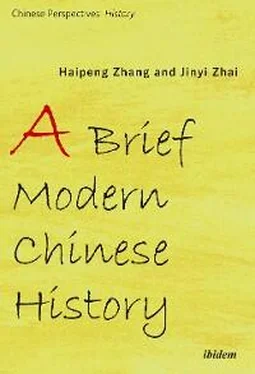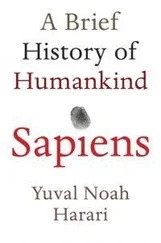Jiao’an was representative of China’s relationships and conflicts with the West. The Beijing Treaty granted foreign Christian churches the right to do missionary work in China. However, conflict between the foreign churches and Chinese residents was inevitable due to the cultural differences and the conflicts of interest regarding land. In many cases, the foreign missionaries gave protection to Christian converts whenever they were involved in disputes. To make matters worse, the foreign governments backing the missionaries used the unequal treaties to pressure the Chinese authorities. They even applied extraterritoriality to Chinese Christian converts. As a consequence, few local governments dared to get involved in disputes involving missionaries and their protégés, and, as a result, Chinese residents often had to endure injustices. Evidence that China was further in decline.
The 1895 Sino-Japanese War
Ancient Japan devoted great attention to learning from China. In the 1860s, Japan started its own self-strengthening movement known as the Meiji Restoration. However, next to Japan’s national endeavor, China’s SSM paled in comparison. Although the two Asian counties stood on the same scratch line, Japan soon left China, its old teacher, far behind. Japan’s Meiji Restoration was based on economic growth, military advancement and cultural reconstruction, whereby Japanese society could be totally overhauled in light of Western modernity. In contrast, after three decades of SSM, China struggled to modernize, particularly where the powerful ultraconservatives were concerned.
Some said that in three decades (1860–1895) China invested, in total, 53,000,000 taels of silver in founding approximately 60 modern corporations. Each year, China set up two factories and invested 1,700,000 in each. Of these, 21 were for the military complex and accounted for almost 70%ercent of the total assets. For the rest, there were 120 capitalist enterprises with total assets of 58,000,000. Every year, four civil corporations were founded and each was worth less than 2,000,000. 40In Japan, it is estimated that more than 5,600 companies were created over more than two decades (1868–1892) and the total investment was 289,000,000 yen . Thus, Japan founded 225 enterprises every year and each was worth 11,000,000 yen or 7,000,000 taels of silver. 41
Indeed, Japan developed much more rapidly than China at this time. The Japanese government redeveloped the whole of society on the model of Western capitalism. Japan had transformed itself into a laissez-faire capitalist constitutional state. Japan sold state-owned enterprises cheaply to private owners, revealing that capitalist Japan had already taken shape. Such actions were not possible in nineteenth-century China, which was still steeped in colonialist practices and semi-feudalism. 42
As early as the sixteenth century, some Japanese politicians attempted expansion. Japan’s Meiji Emperor attempted to extend his territory to Ryukyu, Korea, and Taiwan. Yoshida Shoin 吉田松阴, who pioneered the Meiji Restoration, recommended that Japan take Manchuria (in northeast China), Taiwan, and Luzon (belonging to the Philippines). Fuzuzawa Yukichi 福泽谕吉, an educator renowned for his radical Datsu-A Ron (an editorial advocating that Japan completely abandon its Asian roots and fully integrate itself into European [Western] civilization), said Japan should treat China in the same manner as the West treated China and Korea. 43These politicians, thinkers, and educators advocated for the preparation for an aggressive war against China. At the same time, Japan did its best to develop a navy and an army, set up a general staff under the direct control of the emperor, as well as send a huge number of spies to China. In 1887, Ogawa Mataji 小川又次, a Japanese general, wrote The General Plan of Conquering China (征讨清国方略), analyzing in detail China’s economy, politics, and defense, recommending that Japan strike preemptively and deploy eight divisions to storm Beijing and capture the Chinese emperor. 44
Three years later, Yamagata Aritomo 山县有朋, then Prime Minister of Japan, in the inaugural National Diet (1890) said that Korea was indispensable to Japan’s national interest and that Japan must capture China in order to protect itself. The Japanese Emperor at the fourth Diet (1892–1893) gave voice to Japan’s long-held dream and said, “thereafter the capital may be extended so as to embrace all the six cardinal points, and the eight cords may be covered so as to form a roof” (兼六合以开都掩八纮而为宇). 45Here lay Japan’s wild ambition to create a Pax Nipponica. In other words, the Japanese Emperor had given his approval for war and the invasion of China. In 1893, the Japanese government set up a war materials special committee and formulated the relevant regulations, an important step toward war. Meanwhile, a senior officer led a team of military spies to Korea and China, where they collected as much information as possible and prepared the details of the military operation. Spies concluded that Japan was sure to succeed in the coming war. Japan built a nationwide espionage network within China. By contrast, China was almost completely unaware of what was going on in Japan. When war broke out, Munakata Kotaro (宗方小太郎), a Japanese spy who had direct access to the Gunreibu (the Imperial Japanese Navy General Staff) and the Gaimusho (the Ministry of Foreign Affairs of Japan), was still spying on the Northern Fleet that was anchored in Weihai, a naval port. Revealed, the spy managed to escape using a false identity and returned to Japan safe and sound. 46
In February, 1894, the Donghak Peasant Revolution broke out in the south of Korea. The peasant army aspired to annihilate all the Japanese invaders and wipe out the established aristocracy. Three months later, the rebels captured Jeonju. The Korean king begged Qing for help. Qing sent an army of 1,500 men to Korea and informed Japan of this operation. Japan took immediate action and set up the Daihonei (General Headquarters during war) sending 8,000 soldiers to Incheon, Korea. The Japanese troops occupied strategic garrisons and took full control of Seoul, Korea’s capital. It was here that the military confrontation between China and Japan began. 47War was near. However, Qing was looking for a way to achieve peace quickly. Li Hongzhang, the leading official of the imperial court, agreed to work toward seeking peace rather than engaging in war, and even suggested that the Korean government reform itself in exchange for Japan withdrawing its troops. Li decided not to send reinforcements to Korea, and ordered Qing’s army in Korea to stay where it was.
Li suggested China and Japan withdraw their troops simultaneously; however, this did not work. He called upon Russia and Britain to mediate. At that time, Russia was building the Trans-Siberian Railroad and was too busy to interfere. Russia demanded that Japan hold its hand. But Japan ignored it. Britain attempted to turn Japan into a counterweight to Russia. Meanwhile, Japan wanted to win support from Britain. Britain signed a new treaty with Japan and openly recognized Japan’s Korean policy. Qing’s government ordered its troops to march into Pyongyang. In late July, the impatient Japanese army occupied the imperial palace and imprisoned the Korean king. The Japanese then set up a puppet regime and began attacking Qing’s navy. A Chinese warship was sunk and 800 men were killed.
At the same time, the Japanese army was ferociously attacking Qing’s garrison. Terrified, the commanding general of Qing’s army fled shamefully. Japan then declared war on China in August, which resulted in the First Sino-Japanese War breaking out. Japan moved the Daihonei to Hiroshima where the Japanese Emperor visited as the Generalissimo. This revealed that the Japanese command system, wherein the whole nation acted in concert in war, had taken shape. As a consequence, all of Japan was enthusiastic about conquering China.
Читать дальше












